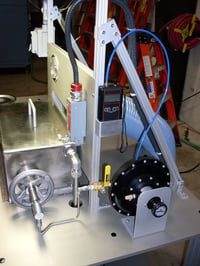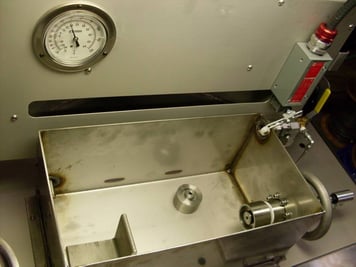Bubble Point Testers
Bubble point test is a non-contaminating, non-destructive filter integrity test that is commonly used to evaluate structural integrity as well as filtration rating during both filter product design and quality control. By immersing a filter into solution and slowly raising the gas pressure on one side, filter pore size can be determined based on the pressure point where bubbles appear.
Turn-Key Filter Integrity Testers
Whether you would like a system that is completely manual, fully automatic, or something in between, Genuen engineers are ready to go to work on your custom test environment.
Because we use commercial-off-the-shelf hardware and software, Genuen systems are highly configurable and scalable. Our past projects have featured:
- Adherence to ARP901A Bubble-Point Test Method and ISO 2942 standards
- Class I, Division 1-rating for hazardous materials and combustible fluids
- High precision sensors and regulators
- Detailed data collection and reporting on any aspect of the application


How Genuen Helps
Our engineering staff has been creating highly configurable test rigs featuring all sorts of electromechanical and servo-hydraulic interfaces since 1991.
Talk to an experienced test consultant today to find out how we can collaborate together to make your bubble point test system a reality.
FAQs
Real-Time PC-based systems offer faster control and sampling rates (via the Real-time system) and more advanced user interfaces (via the PC). In addition to faster sampling, which enables better control, measurement resolution is typically better as well. For example, 16-bit measurements are sixteen times better than 12-bit readings. Real-time control means fast response times, and for bubble-point, systems may include automatic bubble stream sensing. Sampling rates can exceed 10,000 Samples/s per channel. Advanced user interfaces offer virtually unlimited test profiles, which can be pre-defined and uploaded. Lastly, advanced user interfaces typically include a “manual control screen” for operating the equipment as if it were in manual mode.



